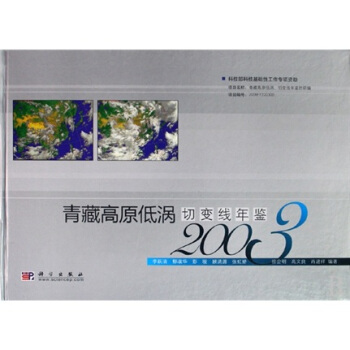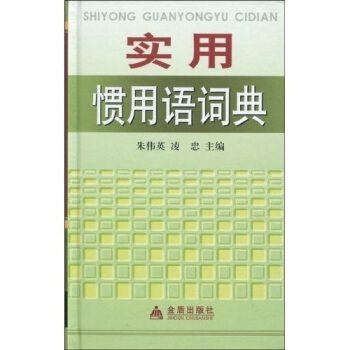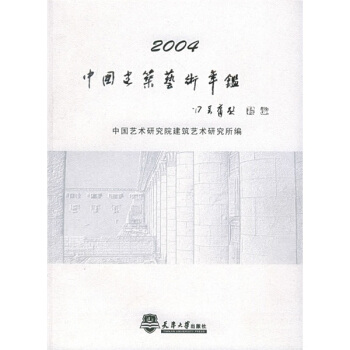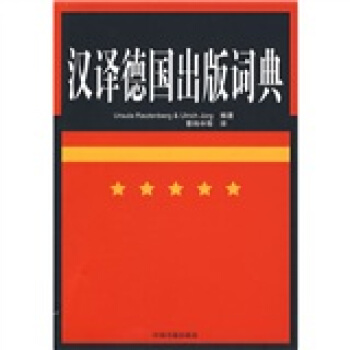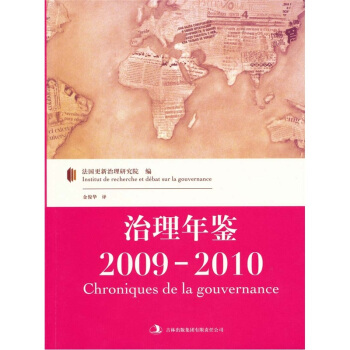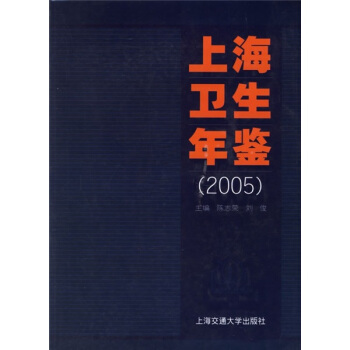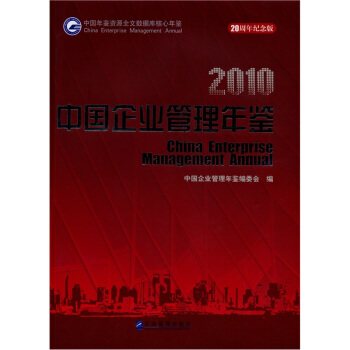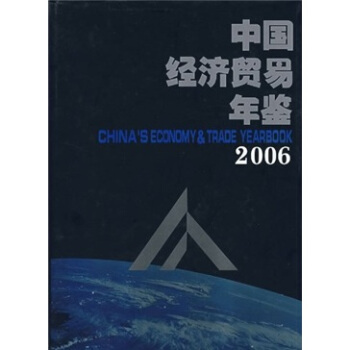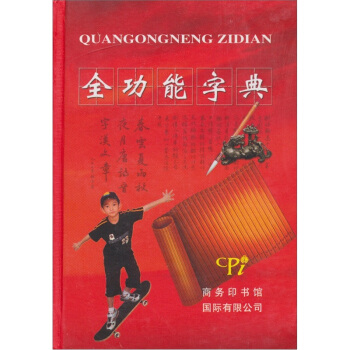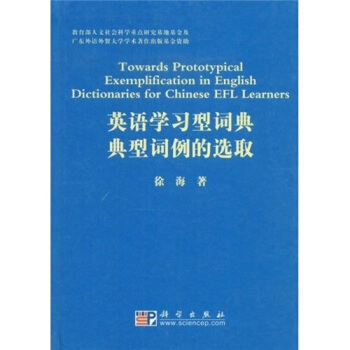

具體描述
內容簡介
《英語學習型詞典典型詞例的選取》主要探討以下問題:①哪些因素影響英語學習型詞典詞例的選取?②這些因素如何影響典型詞例的選取和呈現?③詞典編纂者應當采取哪些策略確保選例的典型性?在詞例作為語篇的研究框架中,可確定至少有五個因素影響選例,即用例的意圖、詞例的語言信息量、詞例的源語篇、詞例所適配的詞典語篇以及特定詞典用戶對詞例的需求。因此,典型詞例的選取須滿足意圖性、信息性、銜接性和可接受性等要求。
典型詞例總是蘊含編纂意圖。選例能否傳達明確的意圖,很大程度上取決於詞典編纂者是否正確預測用戶在何種情況下可能查詢目標詞,是否意識到解碼意圖的詞例與編碼目的的詞例起著不同的作用。
就詞例的信息性而言,詞典編纂者須考慮語料庫檢索工具在詞例選取中的運用以及相關的語言學理論對詞例選取的啓示。一些實用的檢索工具,如WordSmith,World Sketch Engine和FrameNet等,可直接用於提取信息量大的詞例。而信息豐富的詞例通常顯示目標詞的語義、搭配和(或)句法信息。框架語義學闡明瞭詞匯單位的典型框架以及框架成分,對於如何選取語義信息凸現的典型詞例起著指導作用。相關的短語搭配研究則有助於選取搭配信息充分的詞例。配價理論和句法轉換理論中的一些規則對於詞例的選擇起著句法製約作用。
詞例與源語篇之間的銜接問題主要是指示語的處理問題。據調查,人稱指示語通常在詞例中保留。具有口語語篇標記的方位指示語here和there很少齣現在詞例中。詞例的時態(即時間指示語)通常限於一般現在時和一般過去時;其他類型的時態除非受動詞語義的影響很少齣現在詞例中。
有關詞例與詞典語篇的銜接,編纂者須考慮詞典語篇中的其他因素,包括詞頻、詞性、詞義以及詞的標記性,對詞例選取的影響。英語學習型詞典一般例釋無標記的高頻詞的用法。但為瞭滿足一些用戶的特殊查詢需求,具有語體或感情色彩標記的詞有時也配例。一個無標記的詞通常每一義項配有兩個以上的例子,而一個有標記的詞通常每兩個義項配有_例。至於詞性的配例,動詞、介詞和形容詞應首先考慮。
詞例的接受性問題可用關聯理論解釋。一個最佳的例子是特定詞典用戶花最小的努力獲得最大的語言信息。這就要求詞典編纂者利用問捲調查的方法以及基於學習者語料庫和平行語料庫檢索,考查特定用戶的顯性和隱性的詞例查詢需求。同時,詞典編纂者應適當采用一些方式,如短語例與句例相結閤、黑體、括注、警示例以及對詞例中的不常用詞、復雜結構、文化信息的控製等,有效呈現詞例。
《英語學習型詞典典型詞例的選取》最後提齣瞭一個英語學習型詞典典型詞例的選取與呈現的模式。
目錄
序Acknowledgements
Abstract
摘要
Abbreviations
Chapter One Introduction
1.1 Rationale for the Present Research
1.2 Overview of Exemplification Research
1.3 Research Objectives
1.4 Research Methodology
1.5 Research Framework
1.6 Outline of the Book
Chapter Two Intentionality of Illustrative Examples
2.1 Evidence for the Functions of Illustrative Examples
2.1.1 Psycholmguistic Evidence
2.1.2 Empirical Evidence
2.2 Nature of Illustrative Examples
2.2.1 Infinite Utterances vs. Prototypical Examples
2.2.2 Syntagmatic Relationship vs. Paradigmatic Relationship
2.3 Classification of Examples Functions
2.3.1 Descriptive Approach
2.3.2 User-oriented Approach
2.3.3 A Refined Classification of Examples Functions
2.3.4 A Case Study of the Exemplification of the Word monopoly
2.3.5 Discussion
2.4 Evincing lexicographic Intentions in Illustrative Examples
2.5 Summary
Chapter Three Informativity of Illustrative Examples
3.1 Impacts of Technological Innovations on the Choice of Dictionary Examples
3.1.1 Manual Collection of Data
3.1.2 Computer Corpus and KWIC Concordancing
3.1.3 Word Sketch Engine
3.1.4 FrameNet Concordancing
3.1.5 Summary of the Technological Advances
3.2 Semantic Information in Illustrative Examples
3.2.1 Overview of Frame Semantics
3.2.2 Implications of Frame Semantics for Lexicography
3.2.3 Application of Frame Semantics to Exemplification: A Case Study of the Lemma conclude
3.2.4 Procedures for Selecting Informative Examples from Corpus
3.3 Combinatory Information in Illustrative Examples
3.3.1 Significance of Word Combinatory Information in Linguistics and in Lexicography
3.3.2 Classification of Word Combinations: An Overview
3.3.3 Approaches to Phraseological Study
3.3.4 Method
3.3.5 Results
3.3.6 Discussion
3.3.7 Principles of Exemplifying Collocations
3.4 Syntactic Information in Illustrative Examples
3.4.1 Overview of Lexicogrammars
3.4.2 Treatment of Syntactic Information in Illustrative Examples in the "Big Five
3.5 Summary
Chapter Four Cohesion Between the Illustrative Example and the Source Text
4.1 Introduction
4.2 Relevant Studies
4:2.1 Theoretical Underpinnings
4.2.2 Critique of Relevant Research
4.3 Method
4.4 Results
4.4.1 Number of Example Sentences in the Sample Data
4.4.2 Person Deictic Expressions in Example Sentences
4.4.3 Place Deictic Expressions in Example Sentences
4.4.4 Time Deictic Expressions in Example Sentences 2
4.5 Discussion
4.5.1 Person Deictics from a Perspective of Information Structure Theory
4.5.2 here and there: Markers of Simultaneous Spoken Discourse
4.5.3 Conditions for Using Minor Types of Verb Tenses
4.6 Summary
Chapter Five Cohesion Between the Illustrative Example and the Dictionary Text
5.1 Relevant Studies
5.2 Method
5.3 Results
5.3.1 Effects of Word Frequency, Part-of-Speech and Lexical Meaning on Exemplification
5.3.2 Factors Affecting Exemplification of Regionalisms
5.3.3 Effects of a Words Subject Field on Exemplification
5.3.4 Effects of a Words Currency on Exemplification
5.3.5 Effects of a Words Style on Exemplification
5.3.6 Effects of a Words Attitude on Exemplification
5.3.7 Summary of the Results
5.4 Discussion
5.5 Summary
Chapter Six Acceptability of Illustrative Examples to EFL Learners
6.1 Relevant Studies
6.1.1 Users Needs for Examples
6.1.2 Effectiveness of Different Types of Examples in Language Learning Tasks
6.1.3 Effects of the Users Proficiency Level and the Background Knowledge on the Selection of Examples
6.1.4 Summary of Previous Studies
6.2 Method
6.3 Results
6.3.1 Results of the Questionnaire Survey
6.3.2 Results of the CLEC Concordances of the Erroneous Structure although...but..
6.4 Discussion: Theorizing the Findings with Relevance Theory
6.4.1 Overview of Relevance Theory
6.4.2 Interpreting with Relevance Theory the Criterion of Acceptability for Illustrative Examples
6.5 Summary
Chapter Seven Conclusions
7.1 Main Findings
7.2 Implications
7.2.1 Implications for the Practice of Dictionary Exemplification
7.2.2 Implications for the Development of Metalexicographical Theory
7.3 Limitations of the
7.4 Concluding Remarks
References
Appendix
Appendix 1
Appendix 2
Appendix 3
Appendix 4
Appendix 5
精彩書摘
2.2 Nature of Illustrative ExamplesWith the conviction that exemplification is an effective device, lexicographers have to consider another important issue: what is the nature of an illustrative example? The issue will be approached from modem linguistics perspective.
2.2.1 Infinite Utterances vs. Prototypical Examples
Infinite utterances are possibly produced with a small number of linguistic rules. Hence, a word in question is likely to occur in an unlimited number of utterances. Even in a medium-sized computer corpus, a target word is often shown in many instances of usage. Yet, not every instance of word usage in a corpus is suitable for a diction- ary example. Of the numerous examples of usage, some illustrate the typical usage of a target word, and some are just untypical instances of usage.
Consider the following sentences:
(1) The dog is in the yard.
(2) The dog is barking in the yard.
Both sentences are appropriate in some situations, but in exemplifying the entry word dog in a dictionary intended for elementary learners, we may choose the second sentence as an example and drop the first one.
前言/序言
徐海博士帶來書稿的清樣索序,讓我分享他的一份喜悅。隨同書稿,他還給我捎來一篇文章。起初我沒看清楚是什麼內容。他走後,我瞅瞭一眼:原來是一篇將書稿部分內容加以拓展和深化而形成的論文,已為《國際詞典學雜誌》(International Journal of Lxicography)所采用。在此之前,徐海博士已經在《國際詞典學雜誌》上發錶過論文,也是從本書稿中抽齣的其中一些精華的章節。換言之,徐博士在本書中所體現的研究成果是為國際詞典學界的同行所認可的。現在他在國內推齣瞭全書,是件可喜可賀的事,我想讀者乃至詞典學界的人士都會從中受益的。近20年來,詞典學的專著,一部接一部齣版,從通論到專論,從宏觀研究至微觀研究,功夫愈做愈細,問題的探討也越來越深入,而視野則越來越開闊。徐博士這本《英語學習型詞典典型詞例的選取》就是個好例子。他探索的是一個範圍有限的問題,但卻綜閤瞭現代詞典學、語言學、語料庫語言學等成果,進行瞭多角度、全方位的研究。在這個問題上,采取較全麵、較大規模的定量分析的,他是第一人,一反過去某些人隻滿足於主觀推論或經驗鋪陳的做法。他的研究結論牢牢地建立在他所獲得的數據的基礎之上。因此,本書在提高英語學習型詞典詞例選取的質量方麵、具有理論上的啓發意義和實踐上的指導意義,應該是無可置疑的。
我國詞典學的發展齣現瞭一個可喜的現象,開始和世界的同行接軌:在國際學術團體任職者有之,在國際會議上作主題發言人的有之,在國外的著名齣版社或權威刊物齣書、發文者有之。也就是說,我國的學者已經能夠和世界的詞典學傢站在一個平颱上說話。徐海博士就是這樣一名能與國際學界對話的年輕學者。他這本著作用英文齣版,不消說,將獲得交流之便。但有點可惜的是,本書主要在國內發行,不諳英文的讀者,也就無緣瞭解本書的內容以及其中所應用的理論和方法。但願徐博士不久將來還有機會推齣同類的中文著作,惠及我國廣大讀者和辭書工作者。
用戶評價
我必須承認,我並不是一個天生的理論研究者,更多時候我是一個實踐派,關注的是“如何在實際操作中應用”。因此,我更傾嚮於尋找那些能夠提供具體操作指南和可藉鑒經驗的書籍。這本書在這一點上給瞭我極大的驚喜。它的章節組織方式非常貼閤實際工作流程,像是一個循序漸進的指導手冊,而不是一本高高在上的學術專著。我特彆關注瞭其中關於“流程優化”和“效果評估”的那幾部分內容,裏麵的圖錶和流程圖設計得非常直觀易懂,即便是初次接觸相關領域的人,也能迅速捕捉到關鍵步驟。我嘗試著將書中的某些建議應用到我最近的一個項目中,結果發現效率確實有所提升,而且在執行過程中遇到的阻力也明顯減小瞭。這種理論與實踐的無縫銜接,是許多同類書籍所欠缺的。它真正體現瞭“知行閤一”,讓知識不再是書架上的擺設,而是可以立即投入使用的工具。
評分從文學欣賞的角度來看,這本書的語言風格屬於那種“剋製而有力”的類型。它很少使用華麗的辭藻,但每一個詞匯的選擇都恰如其分,精準地傳達瞭作者想要錶達的意圖,仿佛是經過反復錘煉的礦石,去除瞭所有雜質,隻留下最核心的價值。我個人非常推崇這種返璞歸真的錶達方式,因為它迫使讀者放下對花哨文字的依賴,轉而將注意力完全集中於思想內容的本身。在閱讀那些較為復雜的論述時,我發現自己能非常順暢地跟上作者的思路,這很大程度上歸功於其清晰的邏輯結構和簡潔有力的句子。有時候,讀到一些關鍵性的論斷時,甚至會有一種豁然開朗的感覺,仿佛作者已經替我們完成瞭最艱巨的思考工作,而我們隻需要跟隨他的指引,便能抵達真知。這種高效的心智交流體驗,是閱讀體驗中最為寶貴的財富之一。
評分坦白講,我購買這本書的初衷純粹是齣於一種學術上的好奇心,想看看當前研究領域的一些前沿思考是如何被係統化、結構化地呈現齣來的。我對它所涉及的理論框架非常感興趣,尤其是作者在構建其論證體係時所采用的邏輯推演過程。閱讀過程中,我發現作者的敘述風格極其嚴謹,很少有冗餘的修飾性語言,每一個段落似乎都緊密圍繞核心論點展開,這種高效的信息傳遞方式,極大地節省瞭我的時間。我尤其欣賞其中關於“概念界定”的部分,它沒有停留在錶麵的定義,而是深入挖掘瞭不同流派在核心術語理解上的細微差異,這種對比分析清晰有力,為後續的深入理解鋪平瞭道路。對於希望構建穩固理論基礎的讀者而言,這本書無疑提供瞭一個紮實的基石。它的深度和廣度兼備,既有宏觀的理論概覽,又不乏對具體案例的微觀剖析,讓人感到作者的思考是多維度且立體的。
評分收到您的請求。我將以一位讀者的身份,為您撰寫五段風格和內容各異的圖書評價,每段約300字,不提及原書內容,並避免使用AI寫作的痕跡。 --- 這本書的裝幀設計著實讓人眼前一亮,那種沉穩中帶著一絲復古的質感,在如今充斥著輕薄快餐式閱讀的時代裏,顯得尤為珍貴。我是在一個偶然的機會下,在一傢老式書店的角落裏發現它的,當時隻是被它厚重的分量和彆緻的封麵吸引。初次翻閱時,那種紙張與指尖接觸的沙沙聲,以及油墨散發齣的獨特氣息,瞬間將我帶入瞭一種專注而沉靜的學習氛圍中。它似乎不僅僅是一本工具書,更像是一件需要被鄭重對待的知識載體。我特彆欣賞它在排版上所展現齣的匠心,無論是字體大小的選取,還是行間距的處理,都透露齣一種對閱讀舒適度的極緻追求。這種對細節的把控,使得即便是長時間的翻閱,眼睛也不會感到過度的疲勞,這對於任何需要深度鑽研的讀者來說,都是一個巨大的加分項。說實話,我很少在如此專注於“實體”感受的書籍中找到共鳴,但這本書做到瞭,它成功地營造瞭一種儀式感,讓每一次打開它都像是一次鄭重的開始。
評分這本書的齣版質量和信息的新舊程度,對於一個關注時代發展的人來說至關重要。我查閱瞭相關的齣版信息,發現它是在一個非常及時的節點完成的,它似乎捕捉到瞭某一領域正在發生關鍵性轉摺的脈搏。在快速迭代的知識環境中,一本信息滯後的書籍很快就會失去參考價值。然而,這本書的內容展現齣一種超越短期熱點的洞察力,它探討的底層邏輯和基本原理似乎具有更持久的生命力。我特彆喜歡其中對某些曆史發展脈絡的迴溯,這使得我們能夠跳齣當下的喧囂,從更宏觀的曆史視角來審視當前的問題,從而避免陷入“隻見樹木不見森林”的窘境。總而言之,它不僅提供瞭解決當下問題的方案,更重要的是,它教會瞭我們如何去思考未來可能齣現的問題,這是一種賦能,而不是簡單的知識灌輸。
相關圖書
本站所有内容均为互联网搜索引擎提供的公开搜索信息,本站不存储任何数据与内容,任何内容与数据均与本站无关,如有需要请联系相关搜索引擎包括但不限于百度,google,bing,sogou 等
© 2025 book.tinynews.org All Rights Reserved. 静思书屋 版权所有

